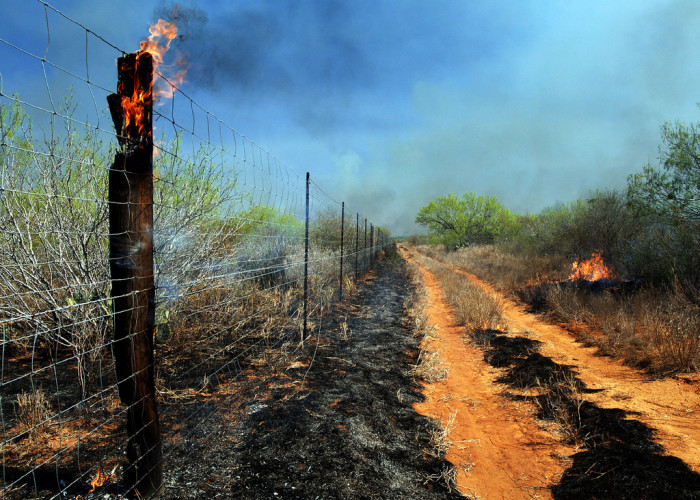Fire is one of the best tools available to promote wildlife habitat, but public misconception and negative attitudes regarding its use are prevalent and has been used for thousands of years for many purposes. Native Americans and early European explorers used fire to clear land for agricultural use, increase desirable herbaceous vegetation and maintain an open understory for easy travel and hunting. Wildfire generated by lightning was much more common before modern civilization and burned at will until natural barriers ceased their spread.
Today’s more urban society is increasingly separated from the natural world, so many people do not realize the importance of fire on a landscape. While there are considerations of safety and liability essential to planning and conducting prescribed burns, landowners should recognize the importance of fire as a wildlife habitat management tool.
Properly applied fire serves several important purposes on the landscape, whether it is forested woodlands or open fields. As land sits unburned, the fuel — material available to burn — accumulates over time and increases the threat of catastrophic wildfire. This situation is simply a disaster waiting to happen. The lack of periodic fire, which would regularly reduce fuel accumulation, causes a fuel load that could result in acres of destroyed forest and wildlife habitat due to a lightning strike or tossed cigarette.
Although fuel reduction is important, another reason wildlife managers are so passionate about fire is that when used properly, it creates a wildlife paradise. Fire can be applied to a variety of upland habitat types. Although the methods and intervals may vary depending on the habitat type and wildlife management objectives, the benefits are well worth the hard work and planning. Fire promotes a host of herbaceous species of grasses and forbs that may otherwise only be present in small numbers. An effective prescribed burn removes undesirable species of shrubs and woody vegetation that offer little wildlife value and lets favorable vegetation regenerate. A frequent fire regime in open areas promotes the growth of various forbs, legumes and native grasses, such as little bluestem, and provides critical food sources for native wildlife such as the Eastern wild turkey. The ground floor becomes open enough to allow easy travel for young quail and turkey poults, while grasses provide retreat cover from predators and structure for insects that poults feed on the first few weeks of life. Pollinator insects like bees and butterflies use these areas heavily as well.
Pine stands, regardless of species, benefit from regular fire intervals. Fire applied after thinning operations reduces hardwood regeneration and competition and promotes a grassy, herbaceous understory. This understory provides benefits such as cover for white-tailed deer fawns, travel corridors and feeding grounds for Northern bobwhite quail and nesting habitat for migrating neo-tropical songbirds. White-tailed deer management may be the driving force for utilizing prescribed fire on a specific property, yet many other species using the same habitat benefit greatly as a result of fire.
The use of prescribed fire is a serious matter and should not to be taken lightly. Improper use of fire can be destructive and dangerous, so burning must always be performed by a qualified prescribed burn manager and team. A professional fire manager may need to be consulted to evaluate the property, understand management objectives, and assist with the proper timing and use of fire for that property.
For more information, contact your local Wildlife and Freshwater Fisheries office (visit www.outdooralabama.com/wildlife-section for contact information). The Alabama Forestry Commission can also assist with technical assistance and prescribed burn plans. Find more information at www.forestry.alabama.gov. The Alabama Department of Conservation and Natural Resources promotes wise stewardship, management and enjoyment of Alabama’s natural resources through four divisions: marine resources, state lands, state parks and wildlife and freshwater fisheries. To learn more about ADCNR visit www.outdooralabama.com.
By Matt Brock
Alabama Department of Conservation and Natural Resources
Courtesy of the Alabama Farmers Federation





